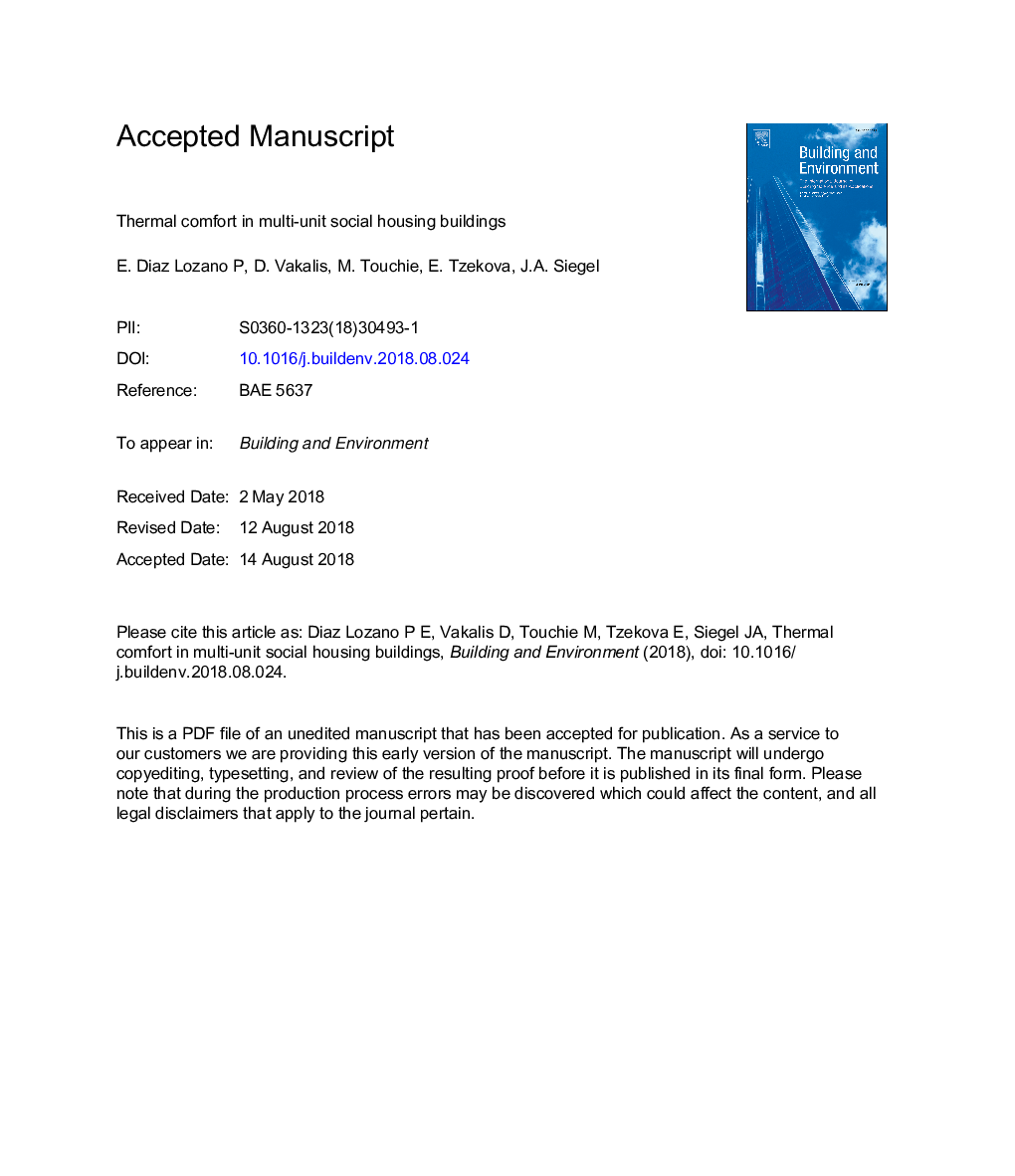| Article ID | Journal | Published Year | Pages | File Type |
|---|---|---|---|---|
| 11000948 | Building and Environment | 2018 | 20 Pages |
Abstract
Thermal comfort influences occupant health and perceptions of the indoor environment. It is particularly important for vulnerable populations, such as those who inhabit social housing, because they may be more sensitive and prone to illness when exposed to high or low temperatures. In this study, we evaluated hygrothermal conditions inside 70 social housing units in Toronto across seven buildings for a year. We found that all the buildings had a high prevalence of discomfort due to high heat in the summer, with some units spending most of the time above 28â¯Â°C. This was indicative that there is insufficient cooling in the units. Further, we found that some units were over-heated during the winter season. Additionally, by analyzing carbon dioxide concentrations, we found that there was no evidence that the units were under-ventilated. Our results were compared to occupant surveys administered in the beginning of the study, and we found that there were discrepancies between the monitoring results and what occupants reported. In particular, there were several reports of under-heating in the winter prior to the monitoring period while the monitored data did not show evidence of under-heating, but this may be partially due to a mild winter in the monitored year. Older buildings may not be fit to withstand extreme heat events that some cities are experiencing and may be placing some of their occupants at risk for heat stresses. Planned energy retrofits are an opportunity to address thermal comfort concerns.
Keywords
Related Topics
Physical Sciences and Engineering
Energy
Renewable Energy, Sustainability and the Environment
Authors
E. Diaz Lozano Patiño, D. Vakalis, M. Touchie, E. Tzekova, J.A. Siegel,
